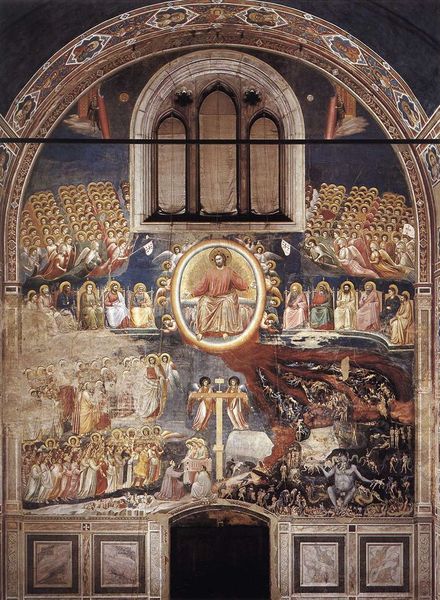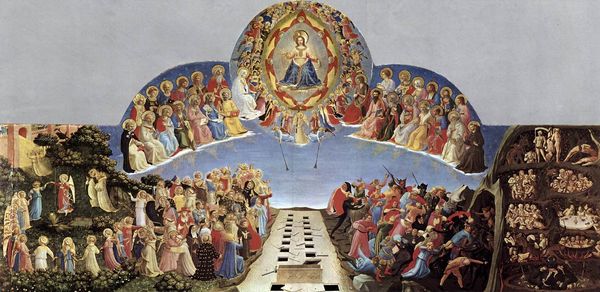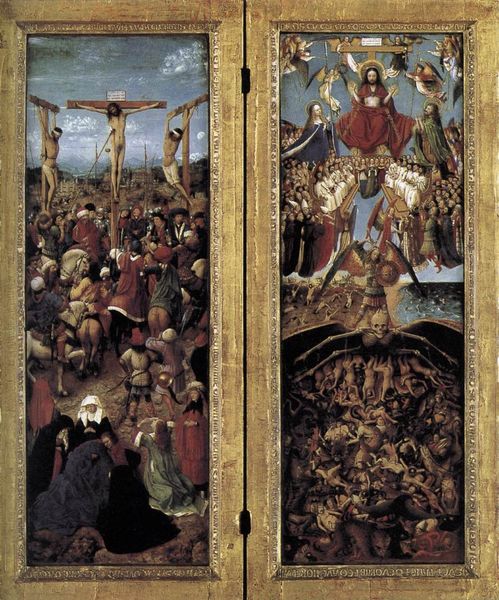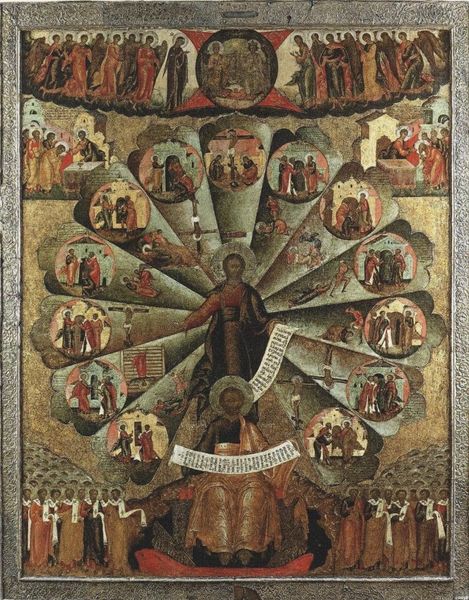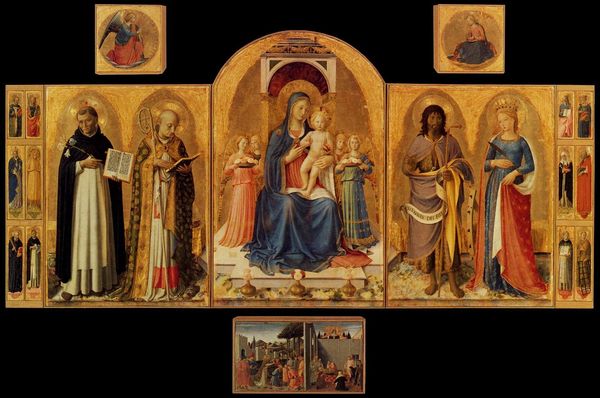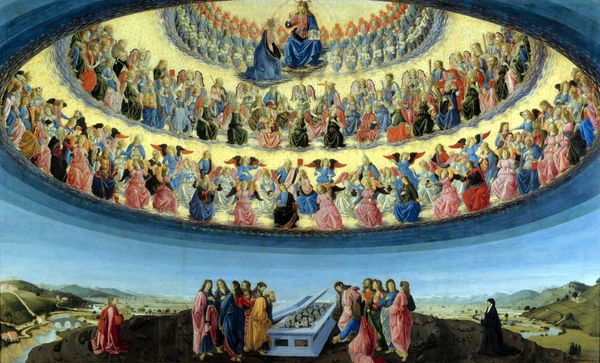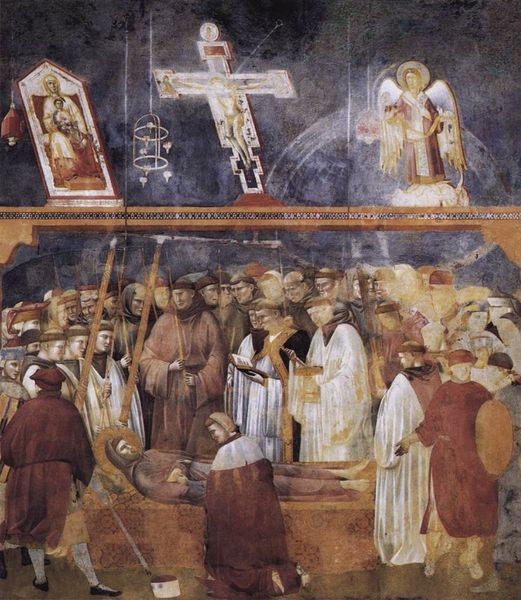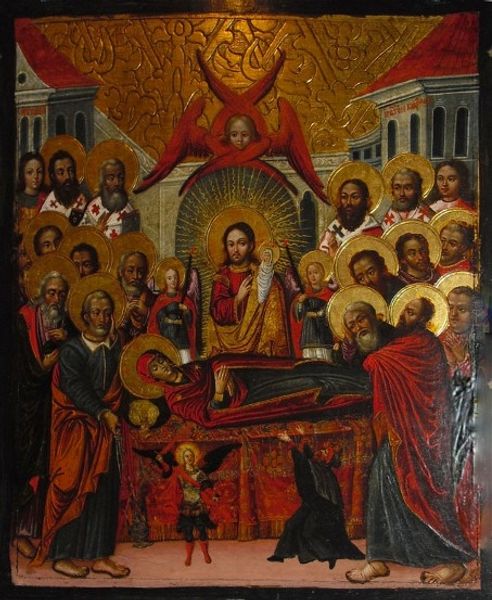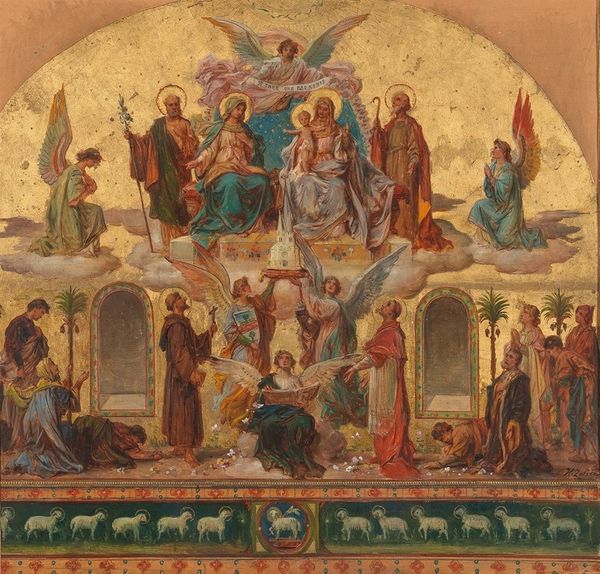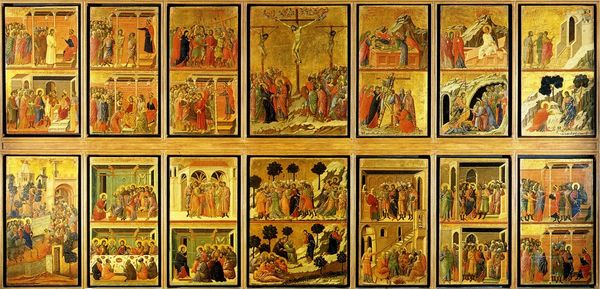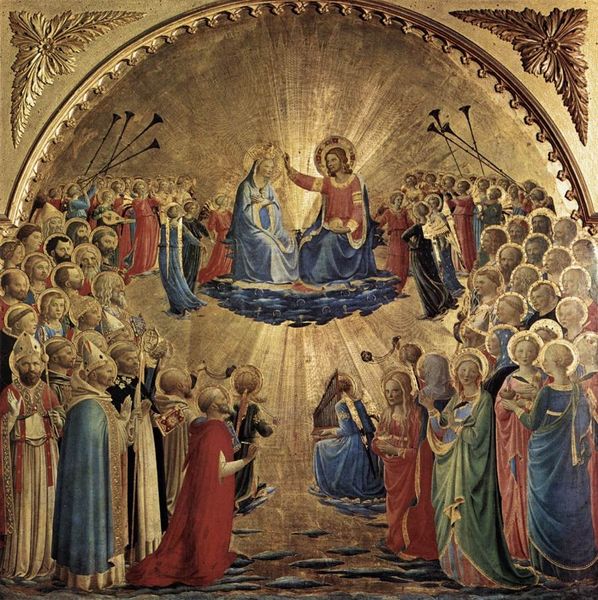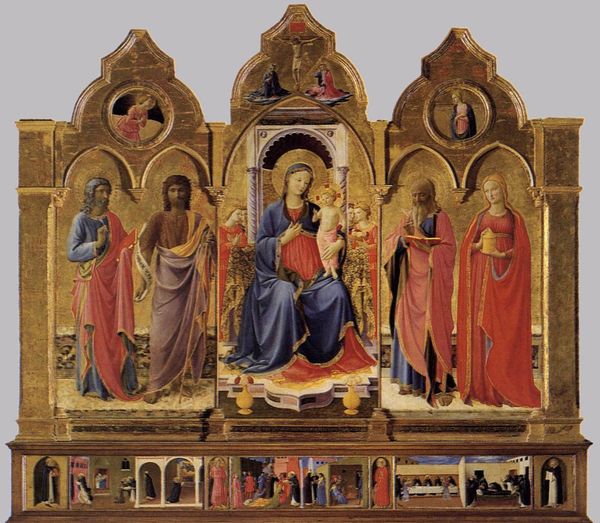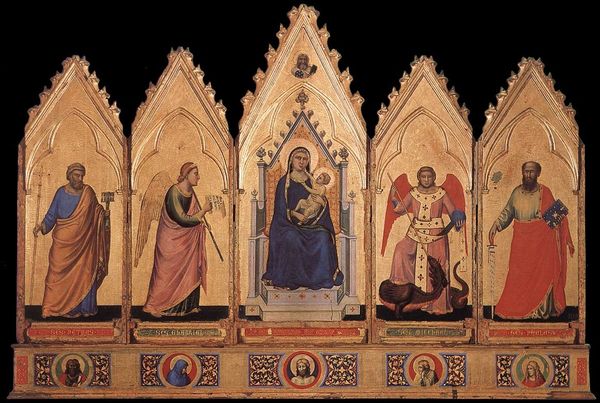
tempera, painting
#
portrait
#
allegory
#
tempera
#
painting
#
perspective
#
geometric
#
christianity
#
men
#
history-painting
#
italian-renaissance
#
christ
Dimensions: 103 x 65 cm
Copyright: Public domain
Fra Angelico painted this 'Last Judgement' panel in Florence, Italy, likely in the 1430s, using tempera on wood. The painting illustrates the Christian belief in a final reckoning where souls are judged and sent to either heaven or hell. Angelico was a Dominican friar, and his art served a didactic purpose: to teach and inspire religious devotion. The painting's composition, with the orderly ranks of the blessed contrasted against the chaotic depiction of hell, reinforces a strict social and moral hierarchy. Florence during the early Renaissance was a society undergoing immense change. The Catholic Church held enormous cultural power, even as new humanist philosophies began to circulate. The patronage of religious orders shaped artistic production, determining subject matter and style. To truly understand this work, we need to look at theology, the history of the Dominican order, and Florentine social structures. These factors are crucial to understanding the painting's original context and meaning.
Comments
No comments
Be the first to comment and join the conversation on the ultimate creative platform.
